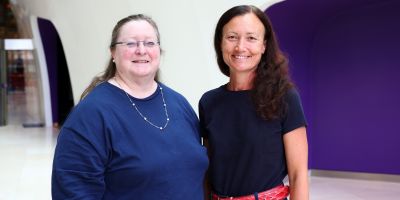Cloud computing hub to launch with £2m EPSRC funding

Leeds researchers and academics from five other institutions have been awarded £2 million of funding for a new hub dedicated to the cloud computing of tomorrow.
The new initiative is part of a £6m investment by the Engineering and Physical Sciences Research Council (EPSRC) – part of UK Research and Innovation – into the technologies for the future.
Known as Communications Hub for Empowering Distributed Cloud Computing Applications and Research (CHEDDAR), it will bring researchers together to drive innovations in cloud computing systems, linking Leeds experts with the wider academic, business and international communities.
The team behind CHEDDAR is led by Professor Julie McCann of Imperial College London. They believe it is imperative that new communications systems are built to be safe, secure, trustworthy, and sustainable, from the tiniest device to large cloud farms. Other partners include the Universities of Cranfield, York, Durham and Glasgow.
Dr Syed Ali Raza Zaidi, Associate Professor of Communication and Sensing in Leeds’ School of Electronic and Electrical Engineering, said their research was working towards harnessing the power of artificial intelligence and machine learning in future networks.
He added: “This will allow us to not only increase the efficiency of current deployments but also allow us to reduce the energy footprint of future deployments while supporting new services. CHEDDAR also aims to contribute towards the shortfall of digital skills and bridge the digital divide by developing human-centric design principles for future technologies.”
CHEDDAR also aims to contribute towards the shortfall of digital skills and bridge the digital divide by developing human-centric design principles for future technologies.”
Professor McCann added: “During the recent pandemic we came to appreciate the great work of the medical sciences, while our communications technologies were quietly supporting our work and providing social lifelines.
“Looking forward, we have new ways of working using AI as well as neuromorphic computing, where we model computer systems after the brain, and quantum computing. These different technologies have varying demands on communication networks, and indeed networking is changing with the various technologies that make up new initiatives such as 6G.
“CHEDDAR will bring all this together to drive research and networking across the UK academic community to facilitate the connection of UK excellence, early career researchers, and brave new ideas in this field.”
The goals of CHEDDAR are to:
-
Develop innovative collaboration methods to engage pockets of excellence around the UK and build a cohesive research ecosystem that nurtures early career researchers and new ideas.
-
Inform the design of new communication surfaces that cater to emerging computing capabilities (such as neuromorphic, quantum, molecular), key infrastructures (such as energy grids and transport), and emerging end-user applications (such as autonomy) to answer problems that we cannot solve today.
-
Create integrated design of hierarchical connected human-machine systems that promote secure learning and knowledge distribution, resilience, sustainable operations, trust between human and machine reasoning, and accessibility in terms of diversity and inclusion.
-
Co-develop regional case studies that reflect the diverse challenges faced by different industries and societies across the UK.
Jane Nicholson, EPSRC’s Director for Research Base, said: “Digital communications infrastructure underpins the UK’s economy of today and tomorrow and these projects will help support the jobs and industry of the future. Everybody relies on secure and swift networking and EPSRC is committed to backing the research which will advance these technologies.”




